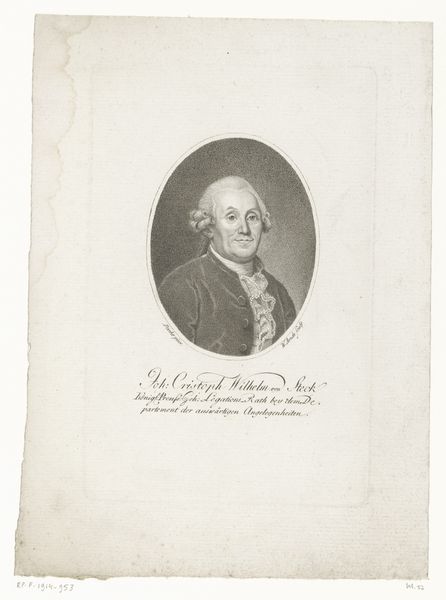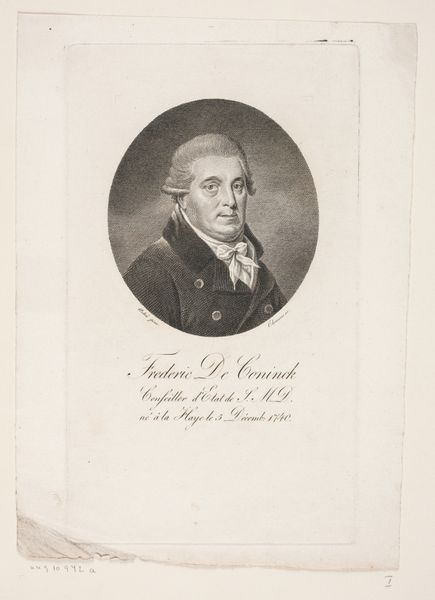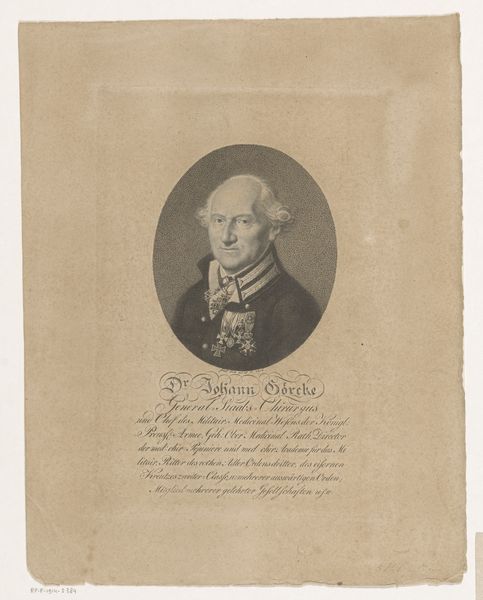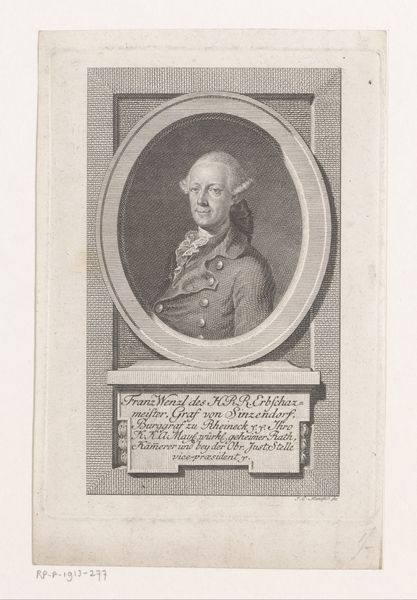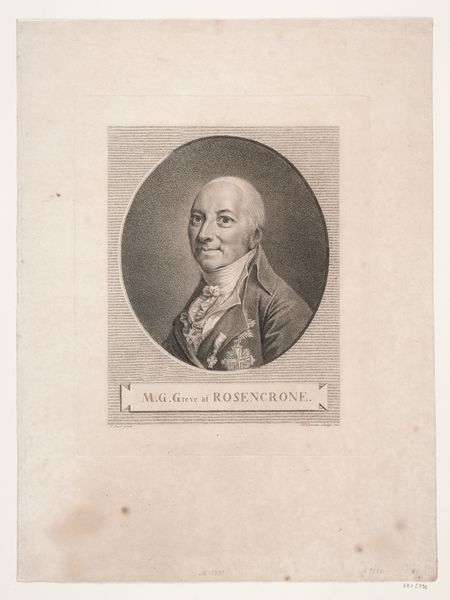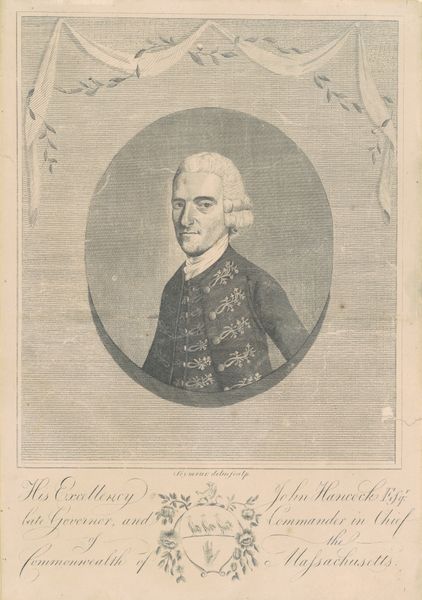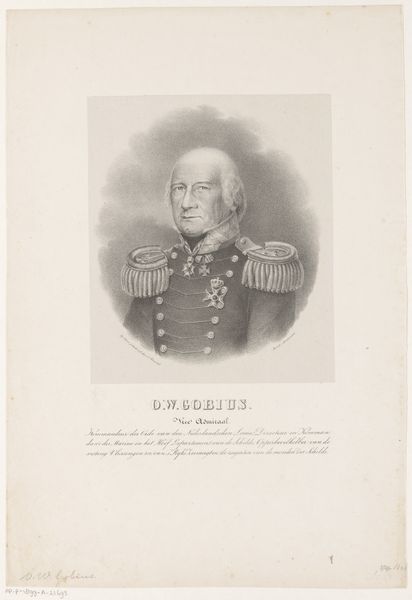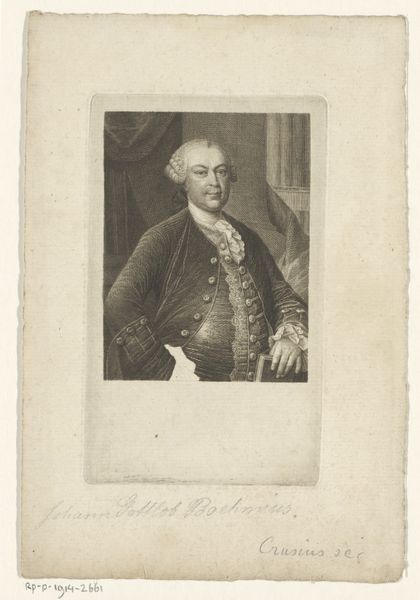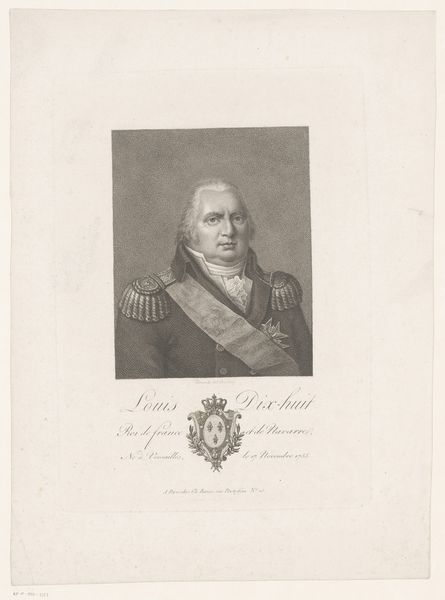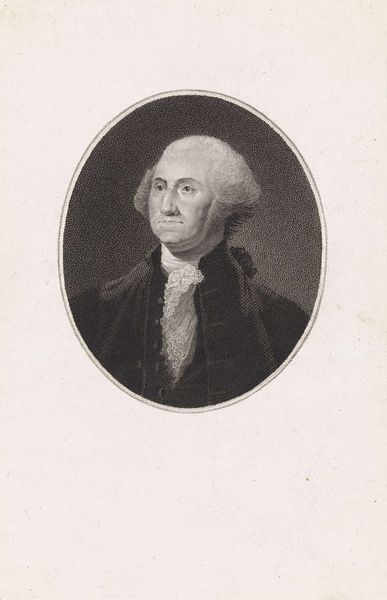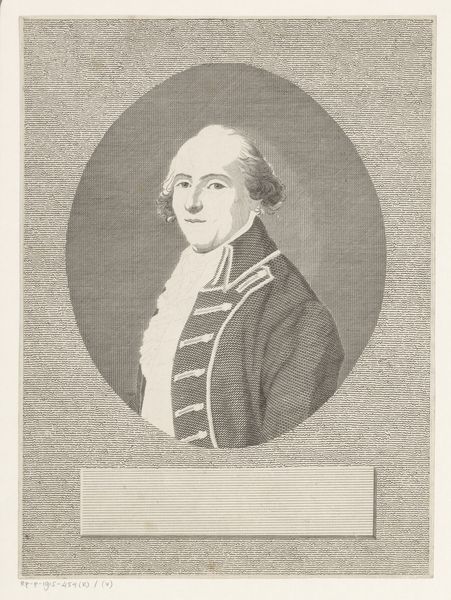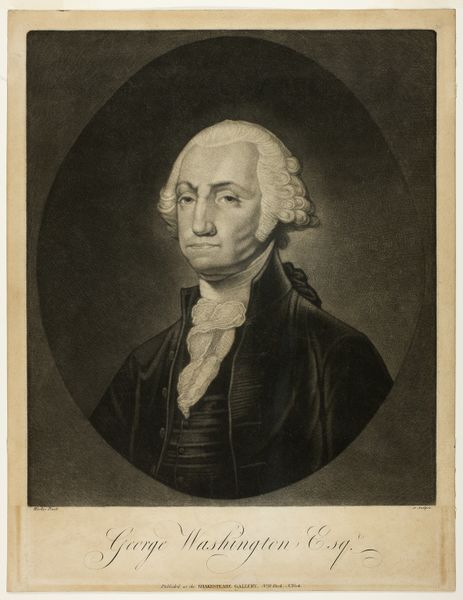
print, graphite, engraving
#
portrait
#
neoclacissism
# print
#
graphite
#
academic-art
#
engraving
Dimensions: height 456 mm, width 338 mm
Copyright: Rijks Museum: Open Domain
Editor: So, here we have Friedrich Wilhelm Nettling’s "Portrait of Wilhelm Gottlieb Vangerow," created in 1806 using graphite and engraving techniques. It strikes me as a very formal depiction, very much in the Neoclassical style, almost like a carefully constructed monument to this man. What’s your take on it? Curator: Absolutely. What’s immediately apparent is how this piece operates within, and reinforces, a specific social order. Think about the context: 1806. The rise of Napoleon was impacting Prussian identity. Portraits like this were crucial tools for solidifying and projecting power during that period. Editor: How so? It just seems like a regular portrait. Curator: Look closer. Who is this man, Vangerow? Chief President of the Royal Prussian Government, as inscribed below the image. Nettling isn't just capturing a likeness, he's producing an image that promotes the Prussian ruling class during a tumultuous time. The formal pose, the engraved medium itself – all these factors signal authority. How might its distribution further enhance his authority? Editor: So the printmaking process...the fact that it can be reproduced and widely distributed... extends that aura of power? I hadn’t considered that. Were prints like this commonly displayed? Curator: Exactly! Prints had a huge public role. Imagine this image replicated and disseminated across the region, subtly reinforcing the strength and stability of the Prussian regime at a time of uncertainty. What does this tell us about how institutions cultivate an identity for its officials and for itself? Editor: I see what you mean. It's not just a portrait, it's propaganda! Thanks! Curator: Precisely. It's a carefully crafted statement of power, reproduced for public consumption and how visual representation reinforces dominant political ideologies. The portrait serves not only as documentation of an individual but as affirmation of political institution.
Comments
No comments
Be the first to comment and join the conversation on the ultimate creative platform.
